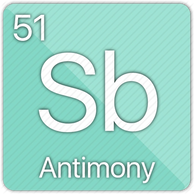Signed in as:
filler@godaddy.com
Signed in as:
filler@godaddy.com
The primary application for lube oil analysis is to ensure that the oil meets the lubrication requirements of the machine.
The chemistry of a lubricant is typically looked at in two ways:
1) the quality of the base oil and its properties
2) the additives and their ability to perform
Appearance
Colour
Odour
Viscosity (cSt)
Viscosity Index
Total Acid Number (TAN) or Acidity
Total Base Number (TBN)
Water Content
Air Release
Asphaltenes
Cold Cranking Simulator (Winter Grade Viscosities)
Hydrolytic Stability
Total Insolubles
Chlorine
Flash Point
Pour Point
Foaming
Free Water
Glycol
Oxidation
Nitration
RPVOT
RULer
Rust Prevention
Sediment (Particulate Matter)
Spectrographic Analysis
Soot
Varnish Number (MPC)
Water Separation or Demulsibility


Used as a multifunctional additive in organic antimony compounds such as Antimony diakyl dithiocarbamates (sometimes denoted as SbDTC or ADD).
Known to perform as: anti-scuffing (EW) agents, anti-wear (AW) agents, oxidation inhibitors, copper-lead corrosion inhibitors and rust inhibitors.

Sources: Corrosion Inhibitors, Detergents, Rust Inhibitors.

Sources: Corrosion Inhibitor additive and Antiwear/Antioxidant additive
Can indicate coolant leak or grease contamination.

Sources: Detergent/dispersant additive, Alkaline reserve additive for high sulphur fuelled engines.
Can be from grease contamination.

Sources: Detergent/dispersive additive.
Can also be found as an alloying element in steel.

Sources: Solid/liquid antiwear additive.
Also used as an alloy in bearing and piston rings.

Sources: Antiwear additives, Corrosion inhibitors, Anti-oxidants additives,
EP additives.

Sulphur present in fuel or engine oil during combustion can combine with water produced during the combustion process to form sulphuric acid (battery acid) which can cause corrosion to engines. Engine oil lubricants thus have special antacid additives (Base Number) to neutralize the acids (Acid Number).

Sources: Antiwear additive (Zinc dialkly dithiophosphate – ZDDP), Corrosion inhibitors, Anti-oxidants.
Also used for alloying element for bearings, thrust washers and galvanized cases.
Copyright © 2020 Machine Diagnostics Ltd - All Rights Reserved.
This website uses cookies. By continuing to use this site, you accept our use of cookies.